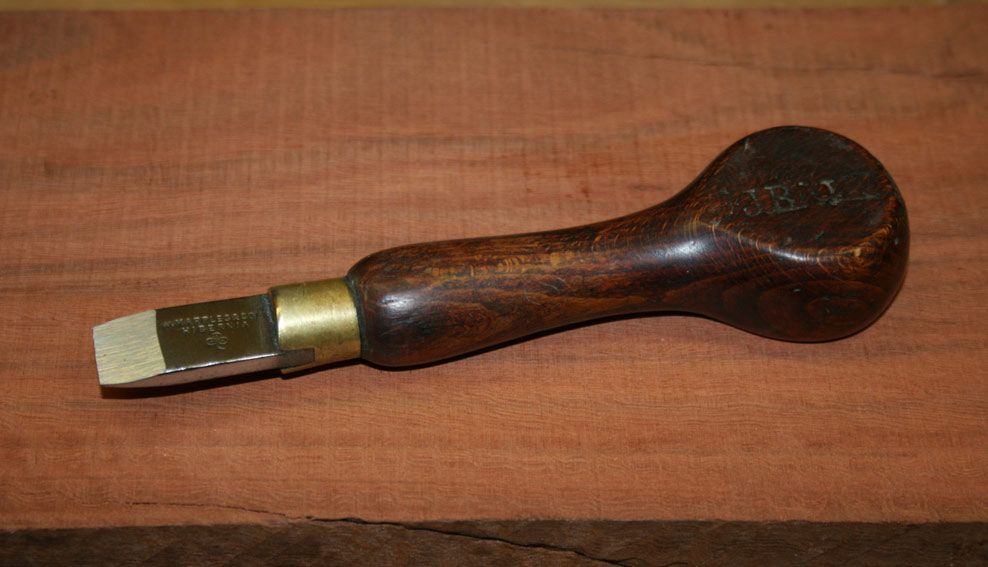I don't know about the iron. My gut is that since the screw hardly needs any serious torque to bed the chip breaker screw that the iron would be OK to use as well.(I hope nobody ever breaks out the end of their lever cap on my suggestion to use it as a screwdriver.
Speaking strictly about the bonze LN now I would say . . .
No not much chance of that. Their bronze is high quality and bronze is pretty tough stuff. It would get itzy bitzy little dings on it (that is what pains me) but no reason not to use it if the dings don’t bother ones sensibilities.
See you might think I didn't spend much time with my BDs but this is ACTUALLY how crazy I got (see photos). I bought a second screw driver and ground the end off a bit to make for a thicker blade.
As I always like to point out on tools when I can : the WF on the handle means it was made here in town at Western Forge.
Then one day I picked up the disc screw driver and it was simple; I didn't have to keep track of two drivers.
You think keeping track of a ruler is tough (not really) well two identical screw drivers with different thickness blades . . . well . . . don't try this at home friends . . .
I AM A PROFESSIONAL






 Reply With Quote
Reply With Quote It is, in reality, a sinister communist anti commercialism plot to bring the American economy to its knees.
It is, in reality, a sinister communist anti commercialism plot to bring the American economy to its knees.




